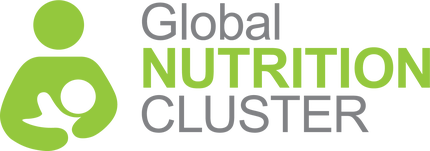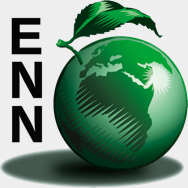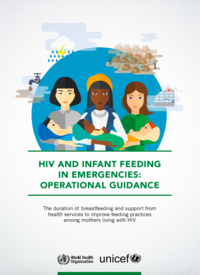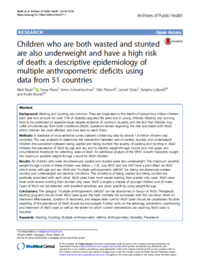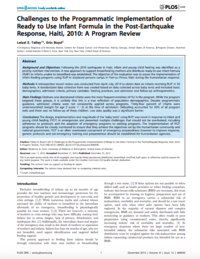Resources
How to write and talk about infant and young child feeding in emergencies
The purpose of this document is to provide guidance for anyone involved in humanitarian assistance who produces communications on behal...
HIV and Infant Feeding in Emergencies: Operational Guidance
This operational guidance, developed by WHO, UNICEF and ENN, outlines the duration of breastfeeding and support from health services to...
Guide to Anthropometry: A Practical Tool for Program Planners, Managers, and Implementers
The revised Guide to Anthropometry: A Practical Tool for Program Planners, Managers, and Implementers, which updates the 2003 Anthropom...
Exploring multi-sector programming at the sub-national level in Senegal, Nepal and Kenya
Lire en FRANCAIS ICI. This is a synthesis document that accompanies three case studies carried out by ENN to document nutrition-sensit...
Emergency preparedness for those who care for infants in developed country contexts
Abstract Emergency management organisations recognise the vulnerability of infants in emergencies, even in developed countries. Howeve...
Concurrent wasting and stunting among under-five children in Niakhar, Senegal
Abstract The study describes the patterns of concurrent wasting and stunting (WaSt) among children age 6-59 months living in the 1980...
Children who are both wasted and stunted are also underweight and have a high risk of death: a descriptive epidemiology of multiple anthropometric deficits using data from 51 countries
Abstract Background: Wasting and stunting are common. They are implicated in the deaths of almost two million children each year and a...
Child wasting and stunting: Time to overcome the separation (2018)
A Briefing Note for policy makers and programme implementers. This policy brief is an is the culmination of the research and discussio...
Challenges to the Programmatic Implementation of Ready to Use Infant Formula in the Post-Earthquake Response, Haiti, 2010: A Program Review
Abstract Background and Objectives: Following the 2010 earthquake in Haiti, infant and young child feeding was identified as a priorit...
Barrier Analysis of Infant & Young Child Feeding and Maternal Nutrition Behaviors among IDPs in Northern and Southern Syria
This Barrier Analysis (BA) assessment represents the first to ever be conducted in Syria. The assessment was requested by UNICEF in hop...
